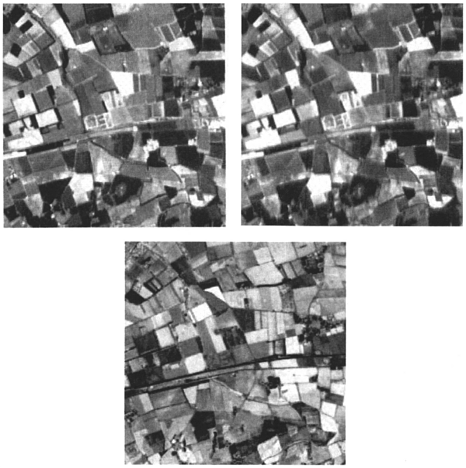294.
| [Cover] [Contents] [Index] |
Page 63
The data range [E, F] in the first principal component (PC1) is larger than either [A, B] or [C, D], and thus a higher contrast image will result. The data range [G, H] of PC2 is much smaller, and the corresponding principal component image will show less variation. However, the information content of the two axes will differ in that PC1 will represent the information that is shared between all or most of the original spectral bands (and may therefore be thought to represent average ‘brightness’), whereas the second and subsequent components will contain information that is statistically uncorrelated with ‘brightness’. For example, the second principal component of a multispectral image set of a vegetated area may be related to variations in the nature, vigour and spatial cover of the vegetation.
In the next example, a three-band SPOT HRV image of an agricultural area is used (Figure 2.3). The resulting principal component images are shown in Figure 2.4a, and a clear decrease in data variance (information) in terms of histograms is illustrated in Figure 2.4b.

Figure 2.3 Three-band SPOT HRV image of an agricultural area in Eastern England. © CNES 1994, SPOT Image distribution.
| [Cover] [Contents] [Index] |
EAN: 2147483647
Pages: 354